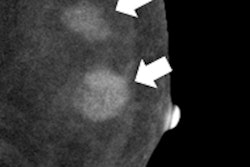Dear Digital X-Ray Insider,
Even as radiology pushes ahead with new technologies, sometimes the tried-and-true techniques still work great. Case in point is a new article on work by Italian researchers that shows chest x-ray is still useful for detecting pathologies of the thoracic aorta.
The researchers compared two-view chest x-ray with CT angiography (CTA) for evaluating thoracic aorta calcifications and/or aortic enlargement in a group of patients who received both types of studies. They found that while CTA did better with detecting aortic enlargement, there was no statistically significant difference in terms of thoracic aortic calcification.
In other news, an international group used x-rays to step back into the mists of time and unlock secrets of skeletons found in a crypt in London. They compared radiological methods for analyzing archeological samples with osteological methods, with the goal of seeing which technique provided a more accurate look at how people lived in the 17th and 18th centuries. Read more by clicking here.
See below for more articles we're highlighting in this edition:
- Noninvasive x-ray fluorescence is being used to detect in vivo signs of gadolinium in bone as part of research into the health effects of gadolinium-based contrast agents.
- A new television advertising campaign was launched by France's independent union of radiologists to promote breast cancer screening.
- The new president of the German Radiological Society reflects on the fast-changing world of medical imaging and the challenges ahead in this interview.
- Radiologists need to do a better job of taking care of their eyes, concludes a new study out of the Republic of Ireland.
- Nonradiologists may be falling short when interpreting chest x-rays for acute pathologies, and more training may be required, a group from Iran found.
These stories and more are available by visiting your Digital X-Ray Community.


















